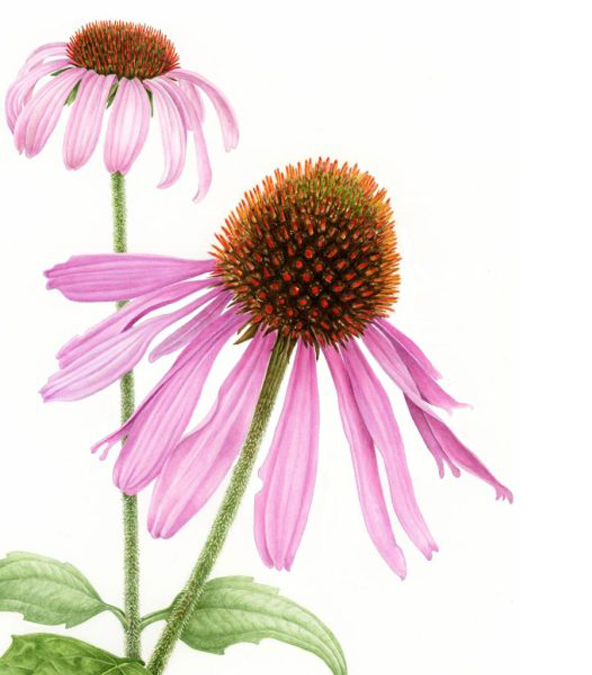Last week, purely by chance while conducting a Google search, I discovered that my Echinacea purpurea had been “stolen” by three clipart services and was being offered as a free high-resolution download. Further inquiries revealed that other botanical artists had similarly been ripped off by the same offenders. The available evidence appears to point to art in a specific exhibition.
As I’d experienced a similar incident some time ago, I wondered if these were infrequent, isolated incidents or whether this practice was more common than I had imagined. I wondered too if there was some way we could proactively locate offenders rather than waiting to perhaps discover them by chance. The problem of course with waiting to perhaps discover that your work has been misappropriated, is that by then the misuse could have been going on for a long time and be extensive.
It turns out that there are a number of online services—some of them free—that enable one to search the internet for locations using a particular image. I used Tineye.com and, to my dismay, found that my Echinacea purpurea had also been misappropriated by two other offenders as far back as 2016. One was a botanical garden that used it to illustrate a poster promoting an event, and the other was a health supplement business that used it to promote their echinacea powder.
So, as a botanical artist, what recourse do you have if you discover that your work is being misappropriated? Well, there are a number of measures you can take, anything from a cease-and-desist notice to a law suit—it all depends upon cost-effectiveness and the money involved. If the misappropriation has occurred as a result of your participation in an exhibition, then the least you should expect is that the exhibition organization has a legal resource to which they can refer the matter for action.
But what about preventative measures? Since the target would usually be high-resolution images, it’s a good practice to only include low-resolution images on websites, in blogs, in newsletters, and for other publicly-accessible online mediums. Water-marking could add an additional deterrent.
If your work is to be reproduced in high resolution in printed books or catalogues, it’s not unreasonable to ask the author, editor, or publisher what measures they plan to put in place to discourage unauthorized misappropriation of your work. And it’s also not unreasonable to ask what they would be prepared to do about it should such a misappropriation be brought to their notice.
Another precaution is available from Thexifer.net where you can embed the copyright status in an image of your painting. This can prove helpful in proving your ownership in the event of a dispute. Thexifer.net offers two levels of service—a basic service at no charge and a more comprehensive service at a very reasonable charge.
With all of that said though, you should nevertheless make it a practice to periodically use one of the services such as Tineye to check on any of your images that have been reproduced anywhere in high resolution, particularly online and printed exhibition catalogues.
We put way too much time and effort into perfecting our art, and way too much time and effort into each piece to allow any incident of this despicable practice of digital art theft to go unchallenged.

